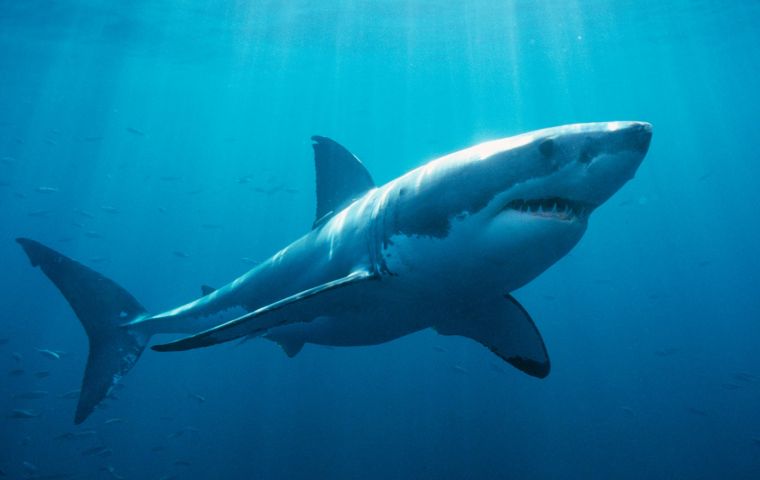MercoPress. South Atlantic News Agency
South Atlantic Shark Conservation Initiative announced
 The Southwest Atlantic is a critical region for marine biodiversity
The Southwest Atlantic is a critical region for marine biodiversity Argentine and Uruguayan scientists are launching the South Atlantic Shark Conservation Initiative, a collaborative research expedition to secure stronger legal protections for sharks in the Southwest Atlantic, a region critical for marine biodiversity.
Uruguay's waters are globally significant, harboring nearly 10% of the world's shark and ray diversity (elasmobranchs).
Conservation of large marine predators like the sand tiger shark (escalandrún), sevengill shark (gatopardo), and dusky shark (bacota) is crucial because they act as natural regulators at the top of the food web. Their observed decline, indicated by reduced sightings of species like the copper shark (pinta roja), threatens the regional marine ecosystem's balance.
Uruguayan legislation regarding shark fishing is considered lax compared to neighboring countries like Argentina and Brazil, highlighting the urgent need for harmonized, science-based policies.
The research expedition is planned for San Clemente del Tuyú, Argentina, specifically the protected area of Punta Rasa. This area is a crucial parturition (birthing) site used by adult female sharks. The central goal is to tag the sharks using state-of-the-art satellite tags.
The tagging will allow scientists to precisely track the migratory patterns and aggregation areas of the marked females, generating objective evidence to support effective conservation measures.
The initiative involves international collaboration with scientific colleagues from Argentina, Australia, and Uruguay. The team also includes a specialized veterinarian to perform ultrasounds on the female sharks.
The research, which builds on two decades of work, is intended to provide the necessary scientific knowledge to inform future conservation measures, potentially mirroring previous successes with dusky dolphins (toninas).
The expedition is being thoroughly documented and shared via social media and a planned documentary, so as to promote greater public awareness and involve younger generations in marine biodiversity education.
The migratory patterns of species like the copper shark and sevengill shark involve the waters of Uruguay, Argentina, and Brazil, underscoring the necessity of coordinated regional investigations that transcend national jurisdictions.




Top Comments
Disclaimer & comment rulesCommenting for this story is now closed.
If you have a Facebook account, become a fan and comment on our Facebook Page!